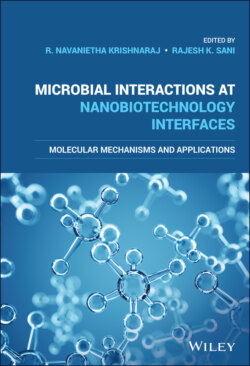Читать книгу Microbial Interactions at Nanobiotechnology Interfaces - Группа авторов - Страница 31
1.5 Bacterial Resistance to Antibiotics
ОглавлениеThe most serious threat to public health are infectious diseases and mortalities that have resulted from chronic infections. The common causative agents for most infectious diseases are bacteria. Before the discovery of antibiotics, the old treatment modalities involved the use of synthetic compounds such as sulfa drugs, quinolones, and salvarsan as chemotherapeutic agents (Aminov, 2010). Later on, in the twentieth century antibiotics emerged as wonder drugs. However, the wild use of antibiotics with uncontrolled measures led to the emergence of antibiotic‐resistant pathogens and the foremost dangerous multidrug‐resistant strains.
The first antibiotic resistance was reported with the enzyme called penicillinase produced from pathogenic Escherichia coli (Abraham & Chain, 1940). In nature, the organism that produces antibiotics has self‐resistance against its own antibiotic. Most of them have more than one simultaneous mechanism to protect the cells completely from their own bioactive molecules. The most common mechanism of self‐resistance involves antibiotic modification or degradation, antibiotic efflux, antibiotic sequestration, and target modification. In the producer organisms, the genetic code for the self‐resistances are clustered with the antibiotic synthesis gene and hence their expression is co‐regulated. The widespread use of antibiotics and coexistence of antibiotic producer organism with nonproducers led to the origin of antibiotic resistance (Kaur & Peterson, 2018). Since NMs have shown potential to deal with antibiotic resistance, a brief discussion on the mechanism of antibiotic resistance is included in this section.
